Review: State of Decay: Year One Survival Edition for Xbox One
I firmly believe State of Decay is Microsoft's not-so-secret weapon in the increasingly voracious console war.
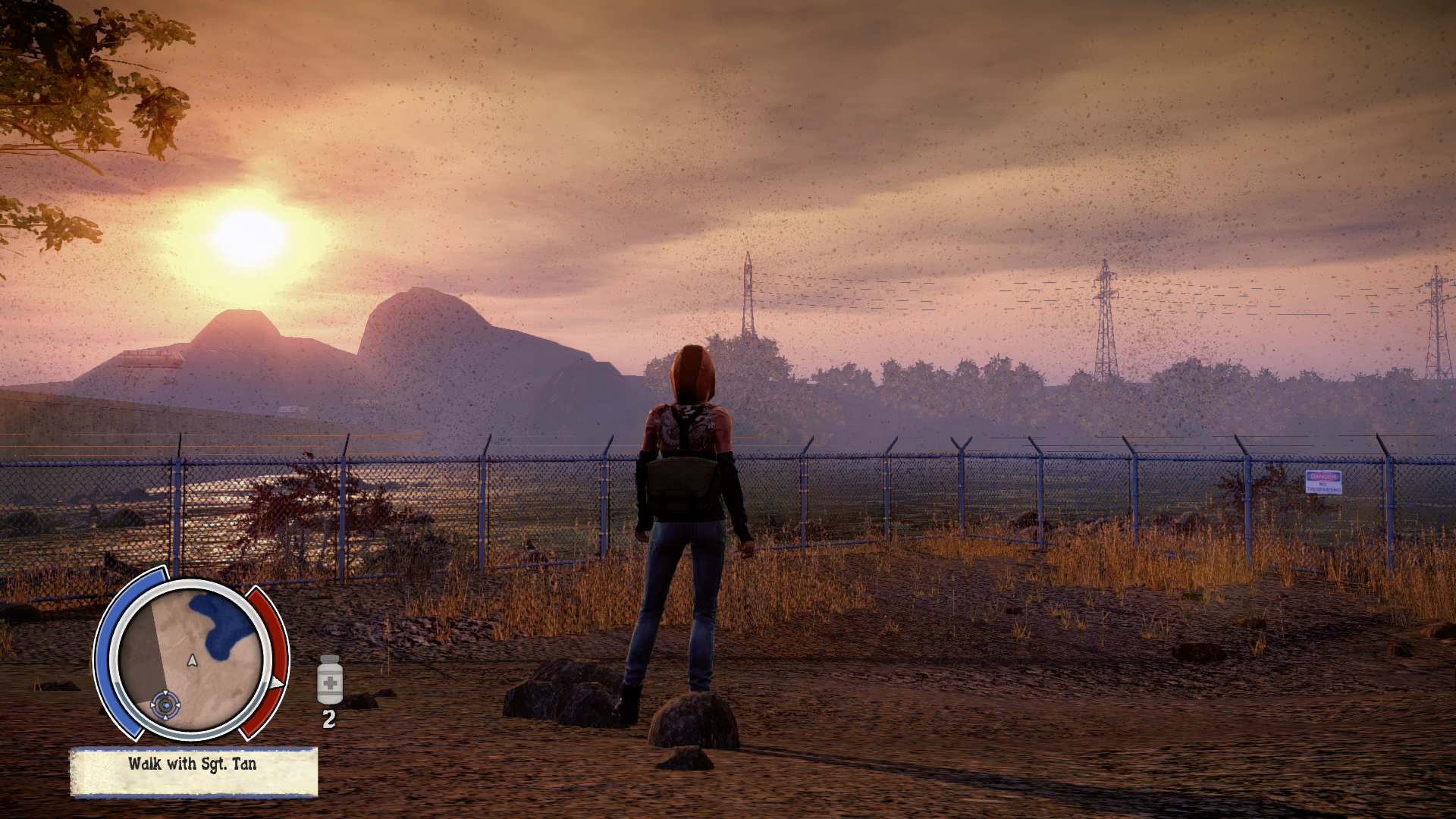
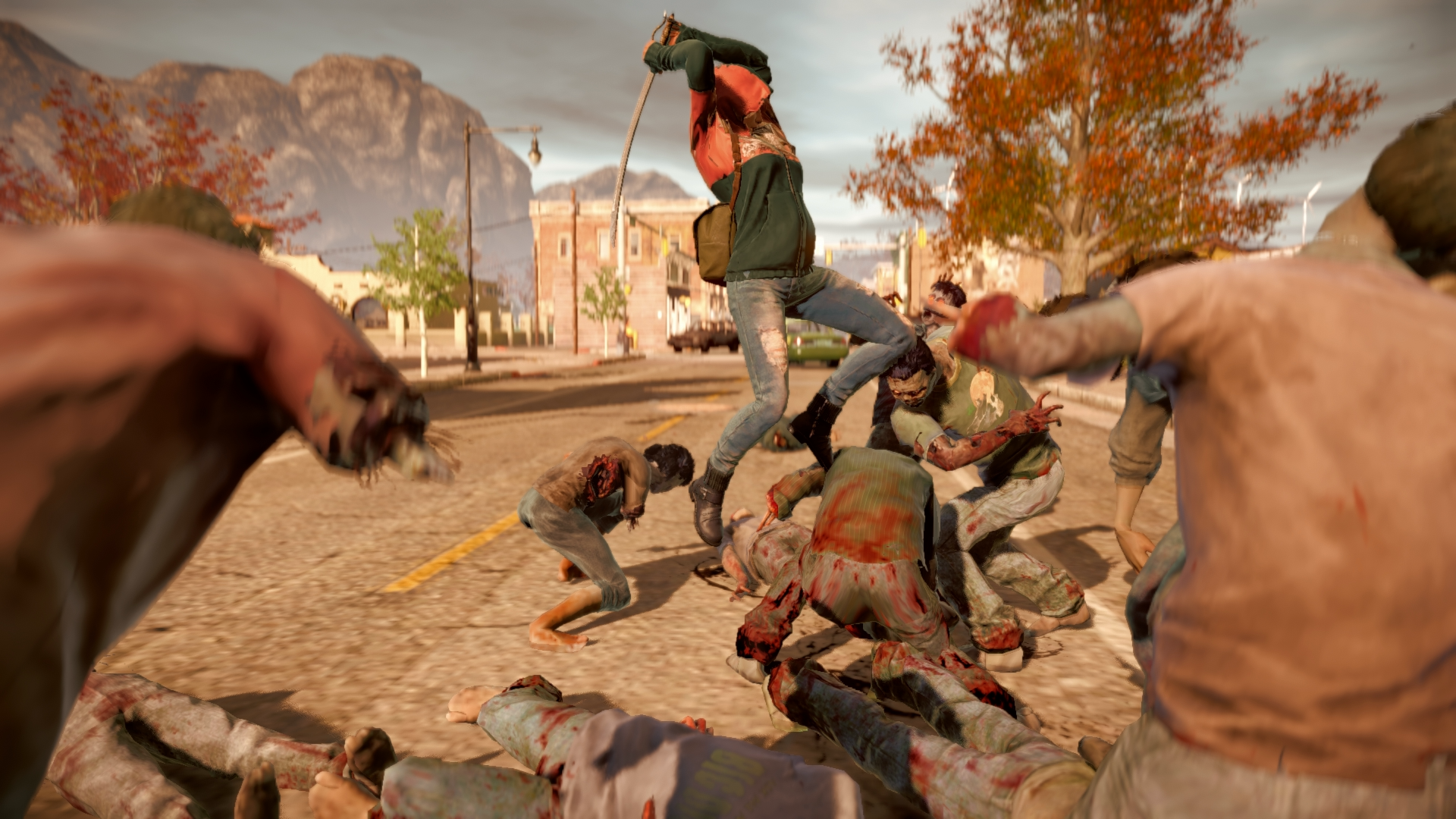
World of Warcraft lead programmer Jeff Strain left Blizzard to head up Undead Labs, and from day one, the end goal was a full-blown zombie apocalypse MMO.
State of Decay is not an MMO, however - it is purely single player. The game acts as proof of concept for Undead Labs' long-term plans. To describe State of Decay and its Xbox One edition as prototypes is a disservice because I believe with conviction that this is amongst the best games on Xbox today.
Intro
State of Play
There are tons of zombie games out there nowadays. This year alone we've had high profile launches from Dying Light and Zombie Army Trilogy, both with their unique aspects. Dying Light is a cross between Skyrim and Mirror's Edge, taking place in a gory sandbox playground; Zombie Army Trilogy is similar to Left 4 Dead, sending four co-operative partners through epic zombie-laden gauntlets. State of Decay however, is more difficult to categorise. I don't think it's hyperbolic to say that State of Decay is unique and stands alone amidst a deluge of other games that revolve around battling hordes of the undead.
State of Decay was originally an Xbox 360 game, based on CryEngine 3. It released through Xbox Live Arcade, Microsoft's digital-only platform typically assigned to smaller games. State of Decay took Xbox fans by surprise and was my personal game of the year in 2013 - it wasn't without flaws though. The original plagued with crashes, long load times, quirky A.I., strange physics and other anomalies that you may associate with a small indie title, rather than a Microsoft Studios game. Regardless of these smaller issues, State of Decay rose to the fore with unique and challenging gameplay, combined with an addictive and satisfying base management metagame.
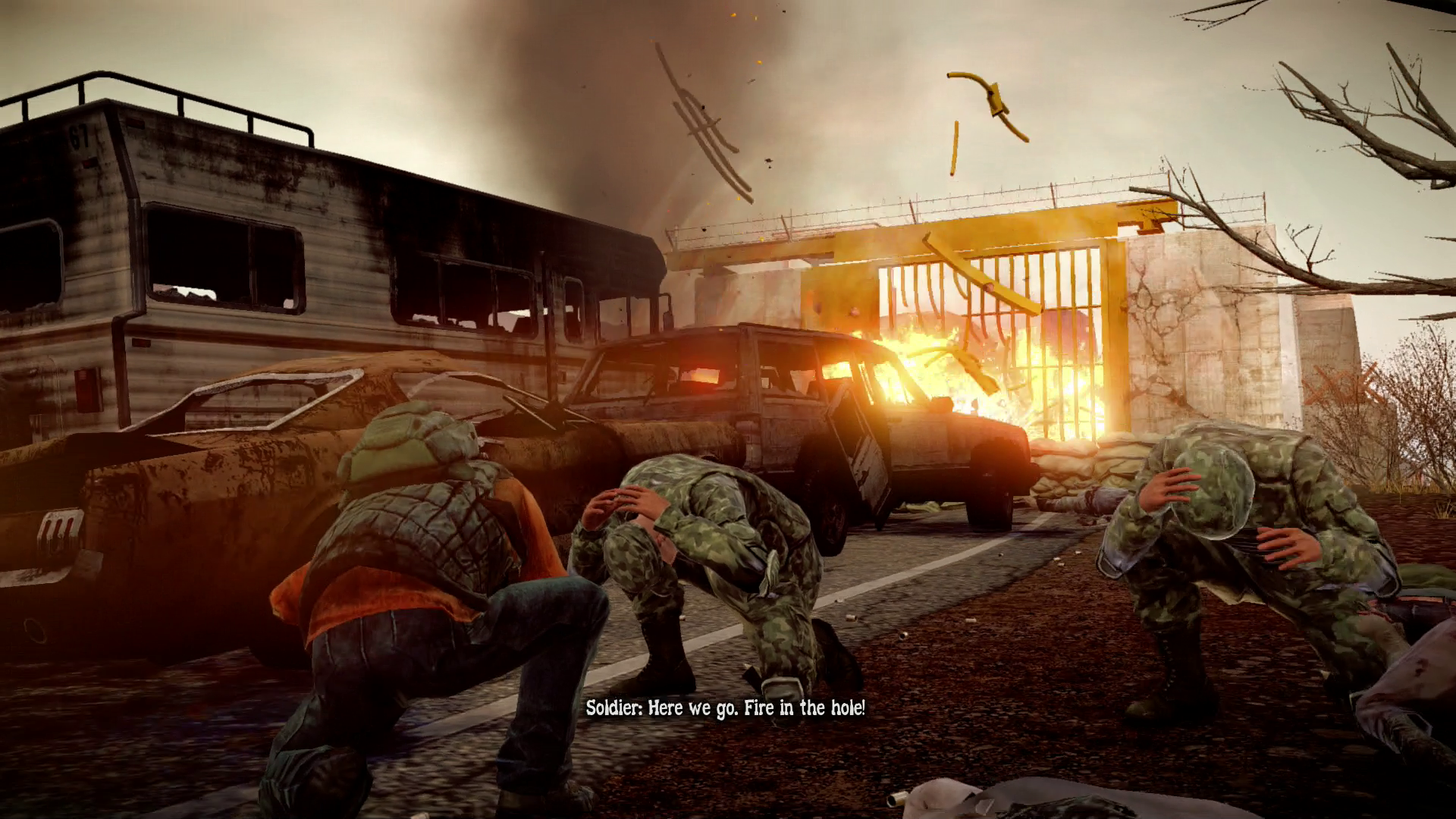
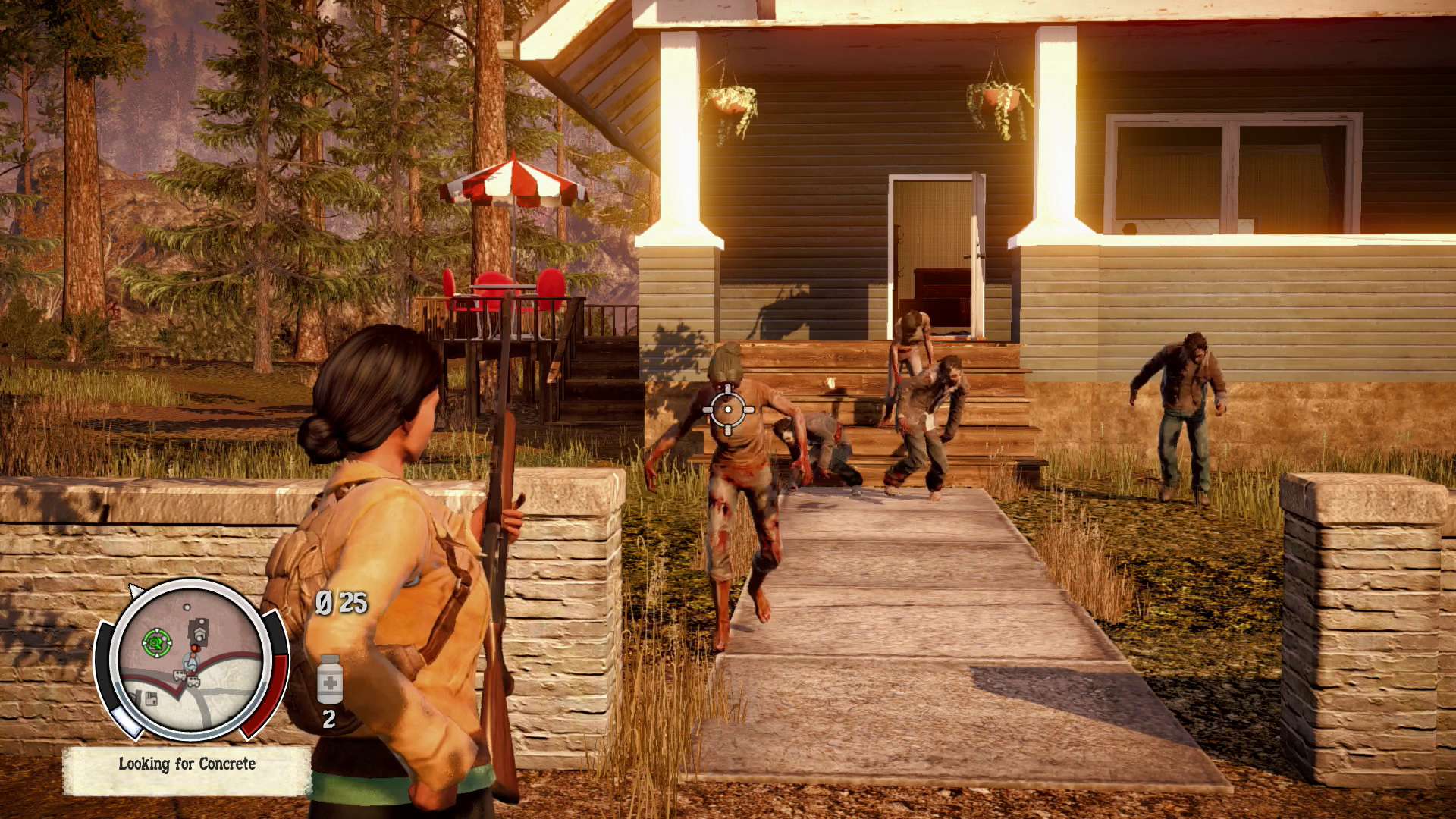
In this Xbox One edition of the game, has State of Decay repaired the flaws of the original? Or is it quick and dirty funding round for the inevitable State of Decay 2?
On Presentation
Get the Windows Central Newsletter
All the latest news, reviews, and guides for Windows and Xbox diehards.
Day 1: Trumball Valley has gone to Hell
State of Decay spares no time throwing you into the action. You assume control of Marcus Cambell, who is fighting for his life against a cadre of cadavers in what was supposed to be a relaxing hiking trip. Something is dead wrong, but for now, your only objective is to survive.
I think it's fair to say the original State of Decay was a moderately ugly game, even by 360 standards. Low draw distance, muddy texturing and toy-like character models can raise an eyebrow (or not, characters don't have expressions), and Year One Survival Edition isn't much different. Although aspects have improved graphically, it's a game that strongly resembles its older, uglier sibling. The resolution has been given a bump up to 1080p, but low poly textures emphasise that 1080p resolution is just a buzzword rather than an all-encompassing measure. Enhancements to shadows, lighting and anti-aliasing are welcome bonuses, but still; cutting-edge, it ain't. At least they didn't slap the "HD" suffix on it and shipped it as a full price title... looking at you Final Fantasy Type-0 HD.
A lot of what makes State of Decay immersive, however, is in its hypnotically engaging gameplay.
Does any of this matter though? Not really. Despite sporting dated graphics, State of Decay is amongst the most immersive games out there today. Trumball Valley is diverse and detailed and begs to be explored (and explore you will, for you have no choice - more on that later). There's an undercurrent of authenticity which penetrates all aspects of the game's presentation; from the sickening crunch of zombie skull on a baseball bat to simple things like different stores carrying different names and branding. State of Decay leaves a satisfying impression of the meticulous design, which evokes a fondness for other power-house open-world games like Grand Theft Auto.
Visuals aside, State of Decay: Year One Survival Edition also carries around 30 minutes of new music, and it compliments what a stellar soundtrack was. The inspirations are clear and diverse. Not only will you reminisce of George A. Romero's 80s zombie classics, but you'll also sink into more contemporary bleakness from Godspeed You! Black Emperor's famous feature on 28 Days Later. The music is dynamic as well, heightening in tension as zombies encroach, before fading into a hopeless melancholy as you travel across both Trumball Valley and Danforth.
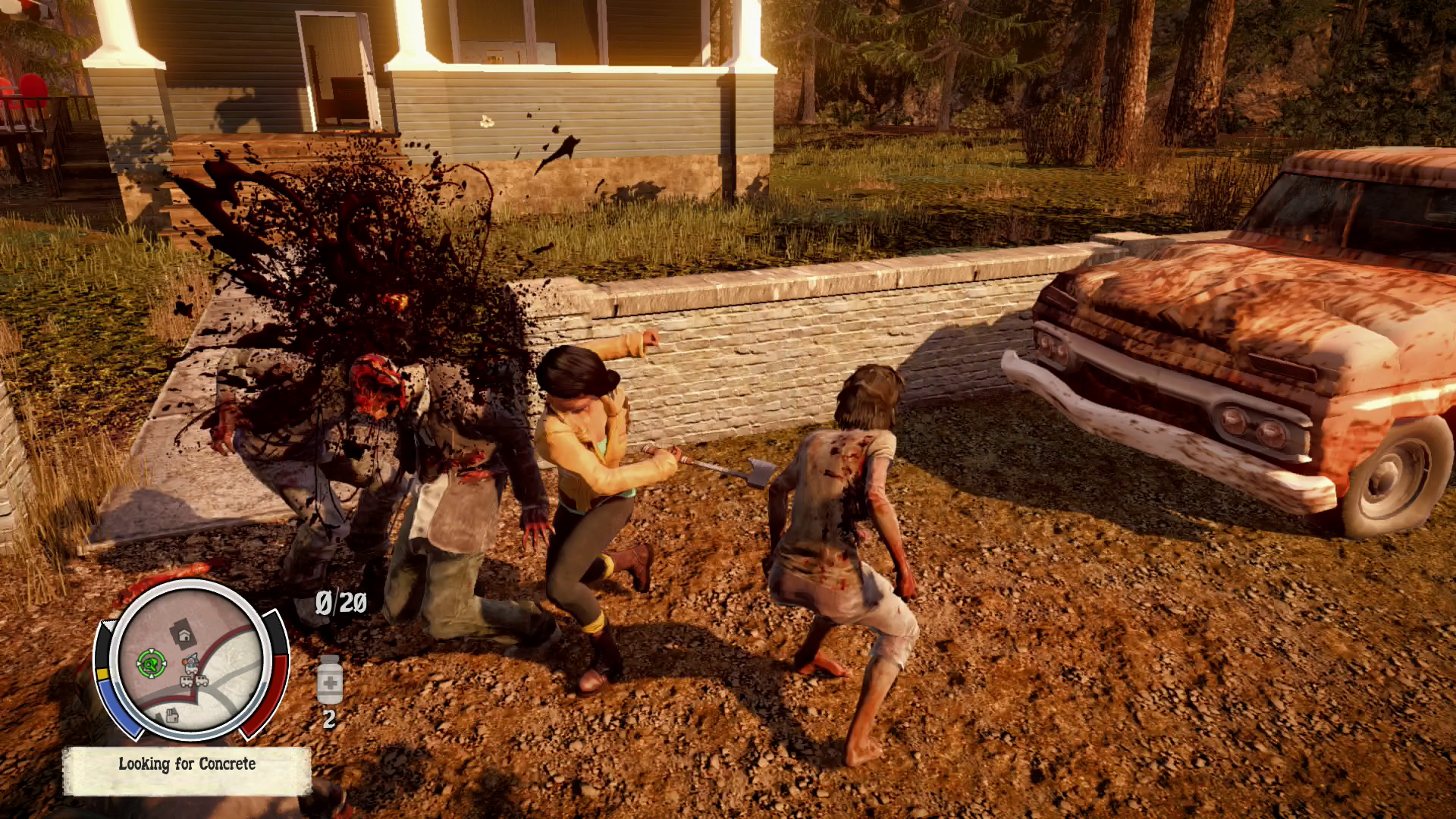
State of Decay: Year One Survival Edition may not be packing the polygon count of Ryse or even last gen's Grand Theft Auto V, but there is a painstaking thoughtfulness throughout its high-density locales.
The important aspects of presentation are solid and cohesive, and occasionally enthralling. I'm stoked to see what these guys do with a bigger budget and considering that Microsoft has entered into a multi-title deal with them, we may just get that.
A lot of what makes State of Decay immersive, however, is found in its hypnotically engaging gameplay.
On Gameplay
Day 24: At war with the zombie horde
State of Decay is not your typical open world zombie game. The emphasis is firmly on survival, and State of Decay is the closest thing to a full on zombie-apocalypse survival-simulator we have on Xbox One, having more in common with Minecraft than Left 4 Dead.
You start in either Trumball Valley or Danforth, depending on whether you select the base game or the Lifeline DLC, and your quest is to survive. Striking out, you'll eventually fight your way to your first community hub - which becomes your base of operations. Within these bases (you can move to larger ones as your community grows), you can set up watch towers, larger living quarters, medical centres and other important zombie apocalypse survival facilities. Each building you develop can upgrade in kind, and provides material bonuses as well as passive. You cannot build these facilities indefinitely though, for they all require resources, which you must acquire for yourself. I'm just scratching the surface here, but the base-building and maintenance taps that prehistoric survival itch, comparable to that found in Minecraft's survival mode.
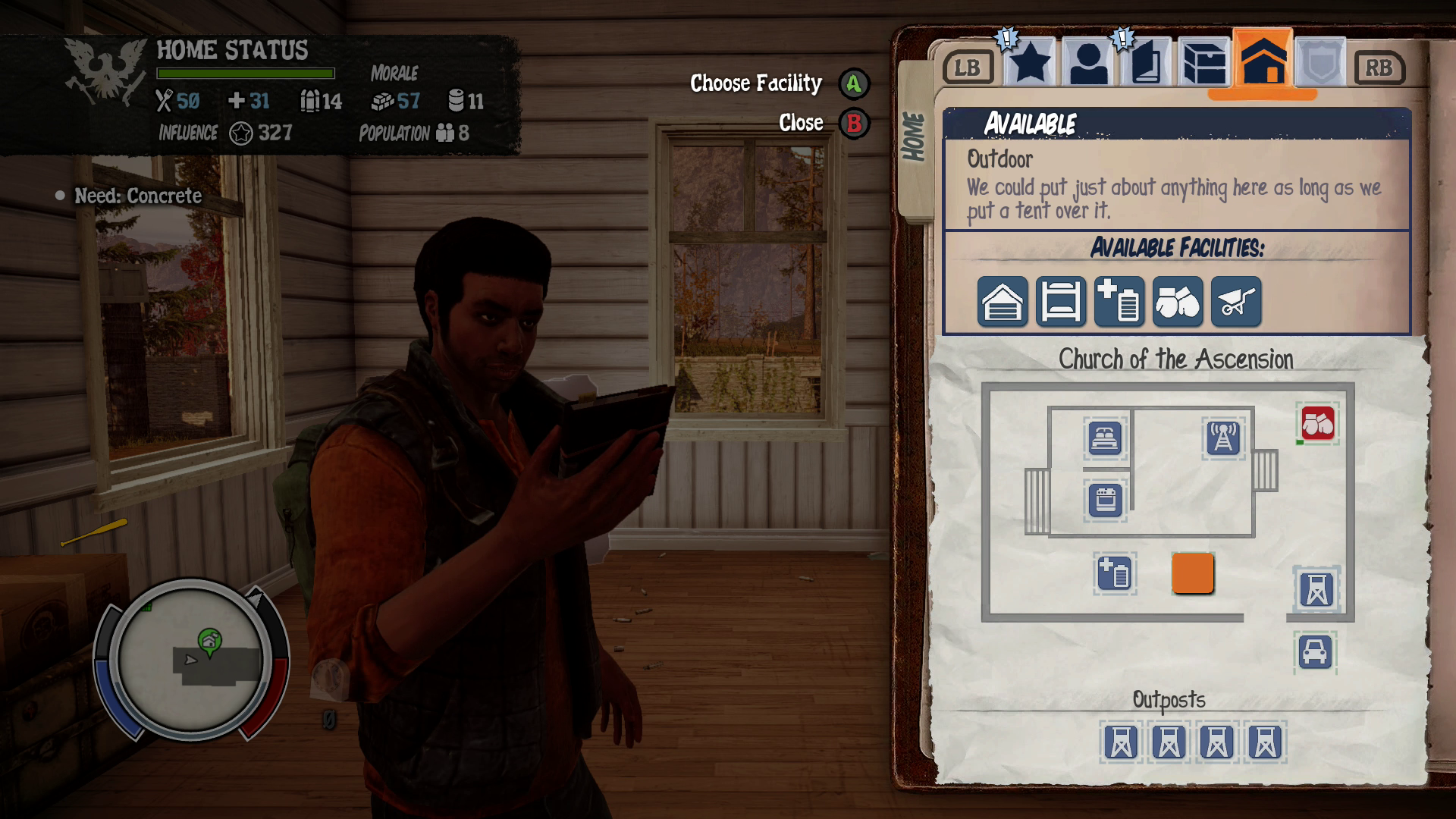
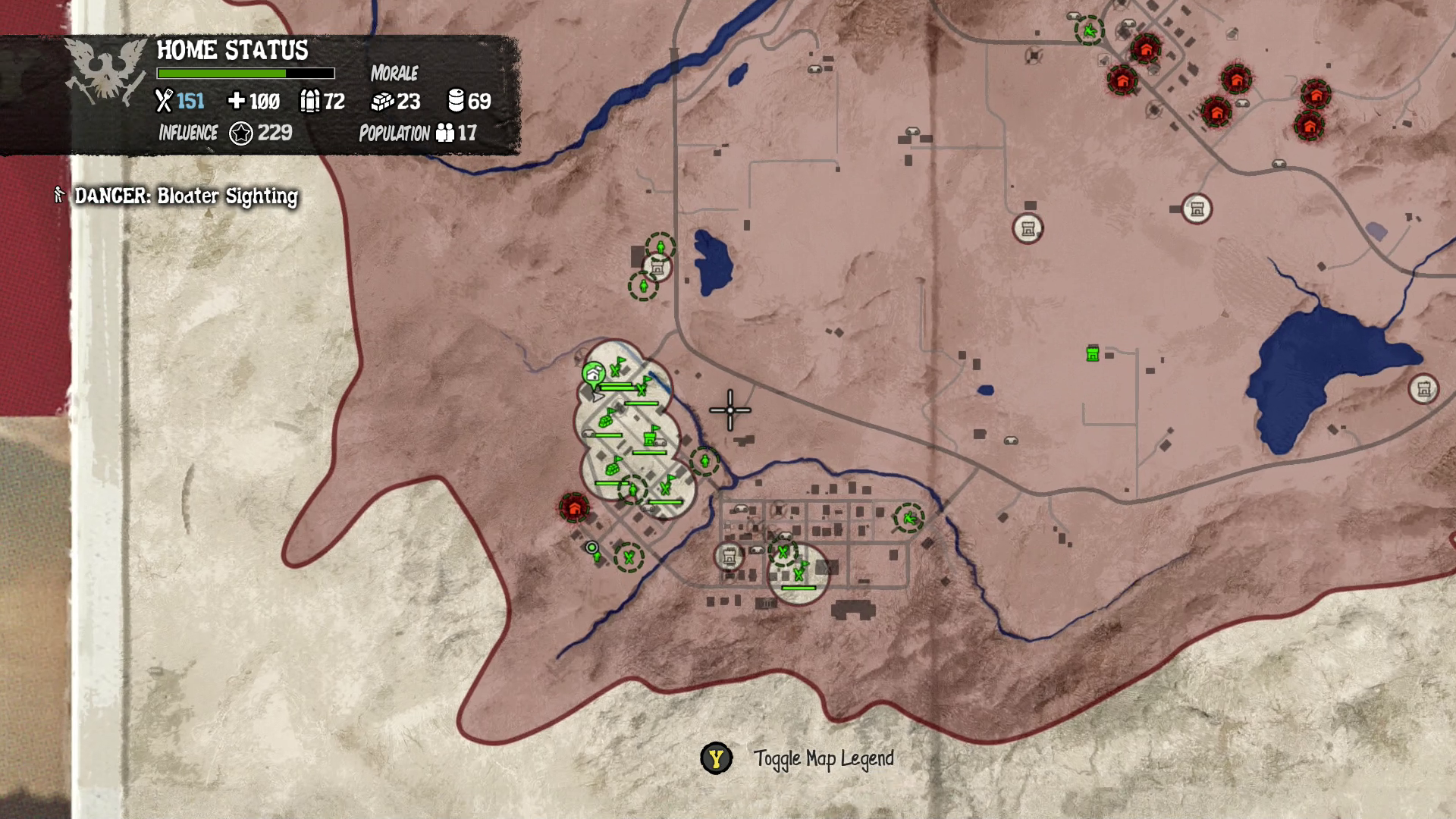
Throughout your survival in Danforth and Trumball Valley, you'll undertake various tasks; from raiding gun shops and grocery stores for supplies, to rescuing survivors and story missions. Both the base game and the bundled Lifeline DLC have a story campaign. The former is all about the outbreak and discovering how to escape the valley quarantined by the army. The Lifeline DLC centers on the army as they try to make sense of the apocalypse and find a cure.
Whether you're in the base game or one of the bundled DLCs, you don't play as any one character, but as the entire community of survivors, each with their unique skills and specializations. The character you're currently controlling will eventually get tired, maybe even injured, at which point it's smart to switch to another character while your favorite recovers. Injury healing, resting, research and building projects all proceed in real time, whether you're active in the game or offline. These gameplay aspects form just a part of State of Decay's ever evolving world.
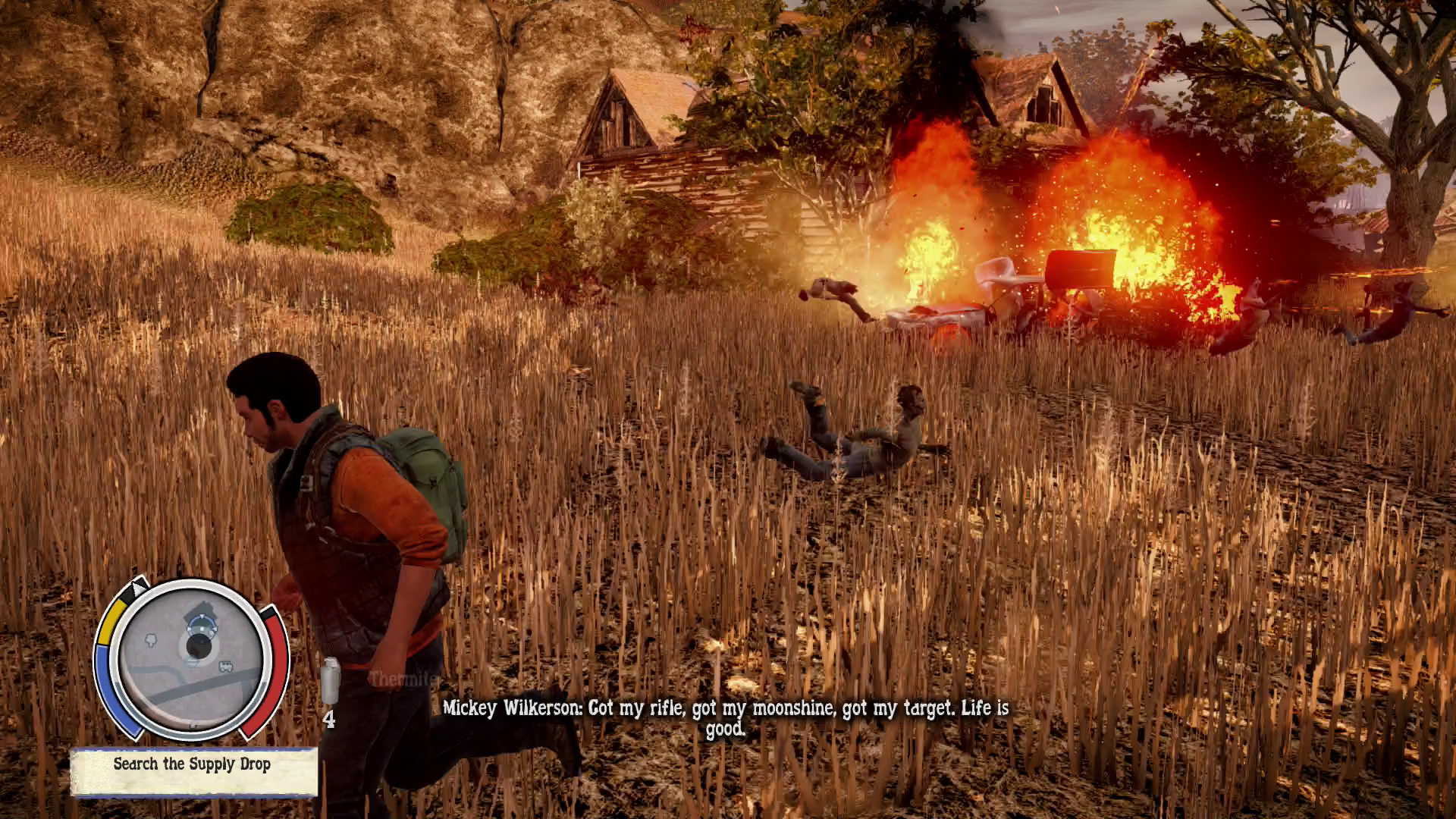
Those dynamic moments when your car breaks down, and you're cornered in a building without ammo and meds are hard to reproduce in other games, and serve as State of Decay's strongest unique selling point.
Undead Labs provide a huge arsenal of tools for survival, bolstered further by additions from the Year One Survival Edition. Every action you take has consequences. Guns are powerful, and a snap headshot can instantly kill any regular zombie. Without a silencer (and often with one), the noise will attract other hungry walkers to your location. Your survivors don't have powerful magic pockets either, inventory space is sorely limited, meaning that your ammo will deplete fast unless you carefully manage its use.
It's often far more economical to fight zombies using melee weapons - not only do they produce less noise, but it's easier to procure them on-site should you suffer a breakage. The limitations of inventory are an important factor in creating tension, as it's an ever-present reminder to not stray too far from safety. Those dynamic moments when your car breaks down, and you're cornered in a building without ammo and meds are hard to reproduce in other games and serve as State of Decay's strongest unique selling point.
All skills develop and grow over time. Wielding blunt, edged, or heavy weapons eventually allow the player to choose one of the two special attacks. Other stats also provide passive and active bonuses as they level up. State of Decay has been updated to make it easier to accrue the EXP needed to upgrade to these skills, meaning that your community will be formidable quite quickly when compared to the original game.
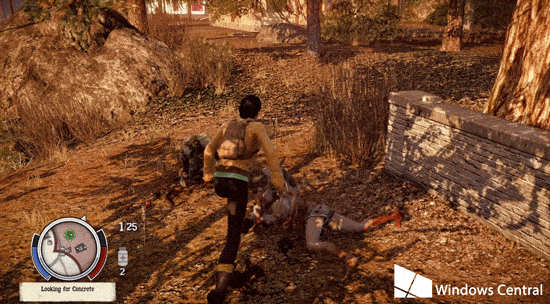
Combat is one of the primary areas Undead Labs has focussed on when it comes to upgrading from the original 360 version. Hand to hand combat has been replaced with an unbreakable knife, to ensure you're never completely harmless, and there are new weapon types that allow for attachments, like underslung grenade launchers and so on. Combat in State of Decay is heavy and satisfying, but you're always vulnerable, Year One Survival Edition is no different in this regard.
It's always easy to get overwhelmed if you're not careful, and if that character you spent hours developing skills for dies, that's it - they're dead. The perma-death in State of Decay can create a vivid sense of desperation, particularly if a mission sends you far afield from supplies and backup. Drawing a comparison to Minecraft again, character's belongings land where they've died. It forces you to make a decision about whether to risk another character recovering those unique Year One Survival Edition weapons or, leave them to the zeds. You never feel entirely safe unless you're bunkered down in your home base, but remaining inactive will see your supplies dwindle, morale crumble, as your community eventually succumbs to a slow death.

Final Words
Day 132: This place is like Fort Knox, almost
Year One Survival Edition contains all the updates from the 360 version, including the ability to place supplies in the trunk of a vehicle and asking other characters to accompany you as you venture out from your base. Sadly, Undead Labs have neglected to update NPC path finding errors, quest triggering problems and crashing issues which marred the original game. Far too often have I had to reboot the game in order to force NPCs to follow me on a mission if I was feeling too frustrated to push them to the quest triggering zones.
Year One Survival Edition additions such as Gurbani Kaur, new weapons, vehicles and mission types and a graphical makeover add flavour for veterans returning to the game. However, I'm concerned that it may not convince Xbox One newcomers of the game's quality at first glance, at least those who may be unaware of Undead Labs' long term plans with Microsoft.
Pros:
- Unique and challenging gameplay
- Welcome improvements to graphics
- Great value price point
Cons:
- Systemic bugs from original unfixed
- Generally unpolished
State of Decay: Year One Survival Edition is still the beloved (and buggy) survival game from the Xbox 360. It reminds us what Xbox One owners potentially have to look forward to in future additions to this special franchise.
- Buy State of Decay: Year One Survival Edition on the Xbox Store ($29.99)
- Buy State of Decay: Year One Survival Edition at Amazon ($24)
To see some elements of this review please visit m.windowscentral.com in the browser on your mobile device.

Jez Corden is the Executive Editor at Windows Central, focusing primarily on all things Xbox and gaming. Jez is known for breaking exclusive news and analysis as relates to the Microsoft ecosystem while being powered by tea. Follow on Twitter (X) and Threads, and listen to his XB2 Podcast, all about, you guessed it, Xbox!
